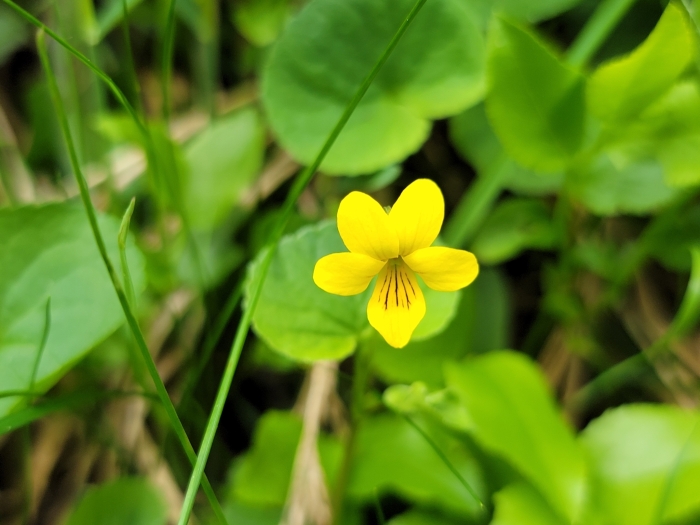Alpine Yellow-Violet
(Viola biflora)
Alpine Yellow-Violet (Viola biflora)
/
/

Elias
CC BY 4.0
Image By:
Elias
Recorded By:
Copyright:
CC BY 4.0
Copyright Notice:
Photo by: Elias | License Type: CC BY 4.0 | License URL: http://creativecommons.org/licenses/by/4.0/ | Rights Holder: Elias | Publisher: iNaturalist | Date Created: 2021-06-23T10:32-07:00 |























Estimated Native Range
Summary
Viola biflora, commonly known as Alpine Yellow-Violet or Arctic Yellow Violet, is a perennial herb that thrives in the cool climates of alpine and subalpine zones. It is native to a wide range of regions including Europe, Siberia, Central Asia, Pakistan, western and northern China, North Korea, Japan, and western North America. Typically found in moist meadows, open woodlands, and along stream banks, this plant is well-adapted to high elevation habitats with well-drained soils.
Alpine Yellow-Violet is notable for its charming yellow flowers, which bloom in pairs atop slender stems from late spring to early summer. The flowers are showy and attract a variety of pollinators such as bees and butterflies. Gardeners value this violet for its low maintenance and ability to add bright spots of color to rock gardens, woodland gardens, and shaded borders. It requires consistently moist soil, but is otherwise undemanding, tolerating partial shade to full sun conditions. While it is not commonly afflicted by serious diseases or pests, it can suffer from root rot if left in waterlogged soil.CC BY-SA 4.0
Alpine Yellow-Violet is notable for its charming yellow flowers, which bloom in pairs atop slender stems from late spring to early summer. The flowers are showy and attract a variety of pollinators such as bees and butterflies. Gardeners value this violet for its low maintenance and ability to add bright spots of color to rock gardens, woodland gardens, and shaded borders. It requires consistently moist soil, but is otherwise undemanding, tolerating partial shade to full sun conditions. While it is not commonly afflicted by serious diseases or pests, it can suffer from root rot if left in waterlogged soil.CC BY-SA 4.0
Plant Description
- Plant Type: Herb
- Height: 0.5-1 feet
- Width: 0.5-1 feet
- Growth Rate: Slow
- Flower Color: Yellow
- Flowering Season: Spring, Summer
- Leaf Retention: Semi-deciduous
Growth Requirements
- Sun: Part Shade, Full Shade
- Water: Medium
- Drainage: Medium
Common Uses
Border Plant, Butterfly Garden, Low Maintenance
Natural Habitat
Native to moist meadows, open woodlands, and stream banks in alpine and subalpine zones
Other Names
Common Names: Yellow Wood Violet, Small Yellow Violet, Alpine Yellow Violet, Arctic Yellow Violet, Banfsa, Kibana-No-Komanotsume, Twoflower Violet
Scientific Names: , Viola biflora, Chrysion biflorum, Dischidium biflorum, Viola biflora f. glabrifolia, Viola biflora subsp. microceras, Viola biflora var. acuminata, Viola biflora var. grandifolia, Viola biflora var. hirsuta, Viola biflora var. nudicaulis
GBIF Accepted Name: